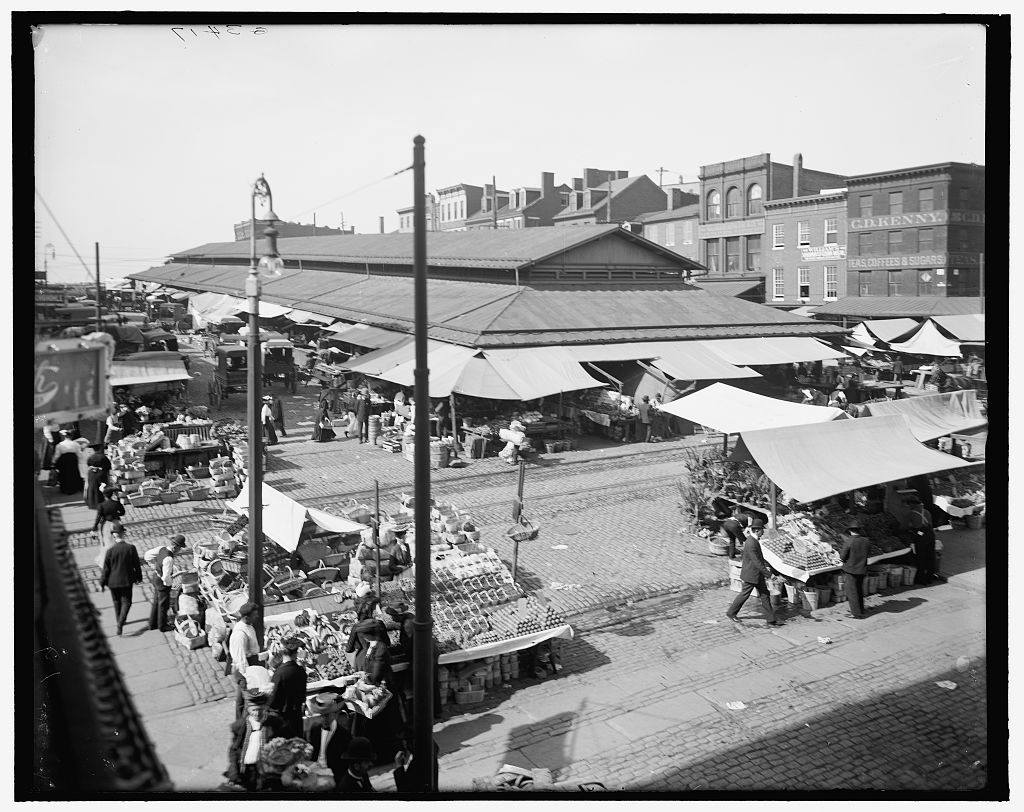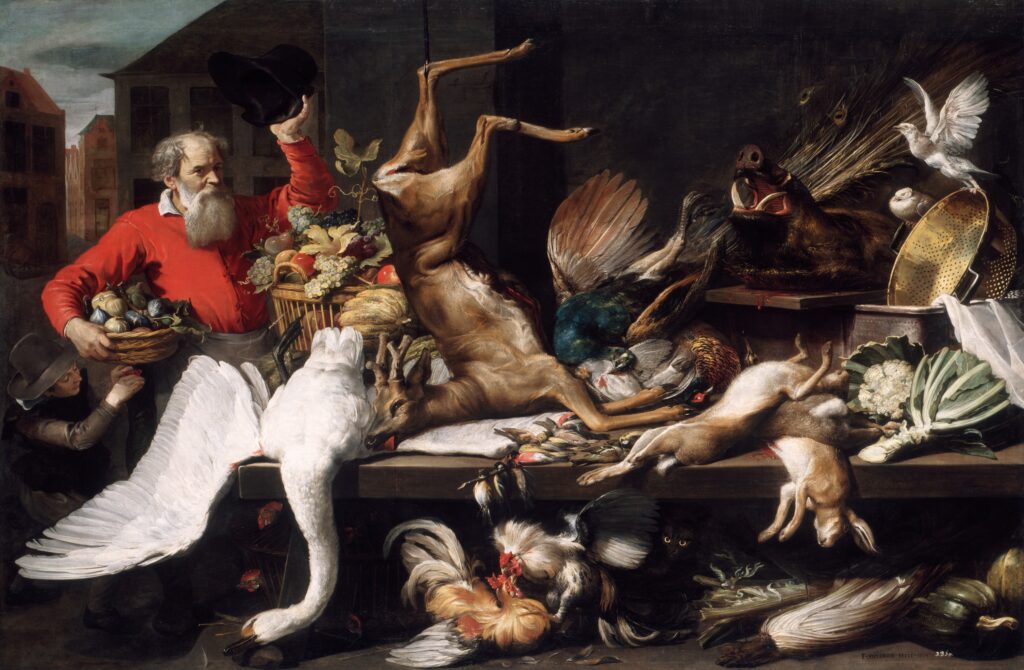Market
By Josephine Preston Peabody
Annotations by Rene Marzuk

I went to Market yesterday, And it is like a Fair Of everything you'd like to see; But nothing live is there: —The Pigeons, hanging up to eat; And Rabbits, by their little feet!— And no one seemed to care. And there were Fishes out in rows, Bright ones of every kind; Some were pink, and silver too; But all of them were blind. Yes, everything you'd like to touch.— It would not make you happy much, But no one seemed to mind. And loveliest of all, a Deer!— Only its eyes were blurred; And hanging by it, very near, A beautiful great Bird. So I could smooth his feathers through, And kiss them, very softly, too: But Oh, he never stirred!

Peabody, Josephine Preston. “Market,” in The Book of the Little Past, 19. Boston and New York: Houghton Mifflin Company, 1908.
Contexts
Josephine Preston Peabody’s The Book of the Little Past (1908), illustrated by Elizabeth Shippen Green, gathered previously published and unpublished poems in which the author touched upon various subjects from a child’s perspective. A favorable 1908 review from The Bellman, a Minneapolis literary magazine, asserted that the volume would be “read and remembered and quoted as few poems of children are,” and referred to Peabody as “one of the first of American lyric poets.”
Resources for Further Study
- In his 1991 essay “The American Public Market” (password protected), James M. Mayo argues that the public market system in the United States, highly influenced by its European counterparts, reached its peak “when the American economic structure was highly local or regional.” According to Mayo, overshadowed by private enterprise and corporatism, public markets were eventually associated with “a form of social life worth saving” and became the focus of historic preservation efforts.
- In her 1997 article “Feeding the Cities: Public Market and Municipal Reform in the Progressive Era,” Helen Tangires offers a brief historical survey of American public markets. During the late eighteenth and early nineteenth centuries, discourses about the need to maintain, protect, and regulate public markets through municipal action found their way to contemporary newspaper columns and specialized journals. Public markets were considered indicators of “a city’s health and well-being” and many people fought “to protect them from private enterprise.”
- Helen Tangires’s 2008 book Public Markets delivers a comprehensive illustrated account of public markets’ buildings and spaces throughout the years.
Contemporary Connections
Nancy B. Kurland and Linda Aleci. “From Civic Institution to Community Place: The Meaning of the Public Market in Modern America.”
The Greensboro Farmers Curb Market, founded by the City of Greensboro in 1874, remains committed to sell products either grown or made by the sellers.